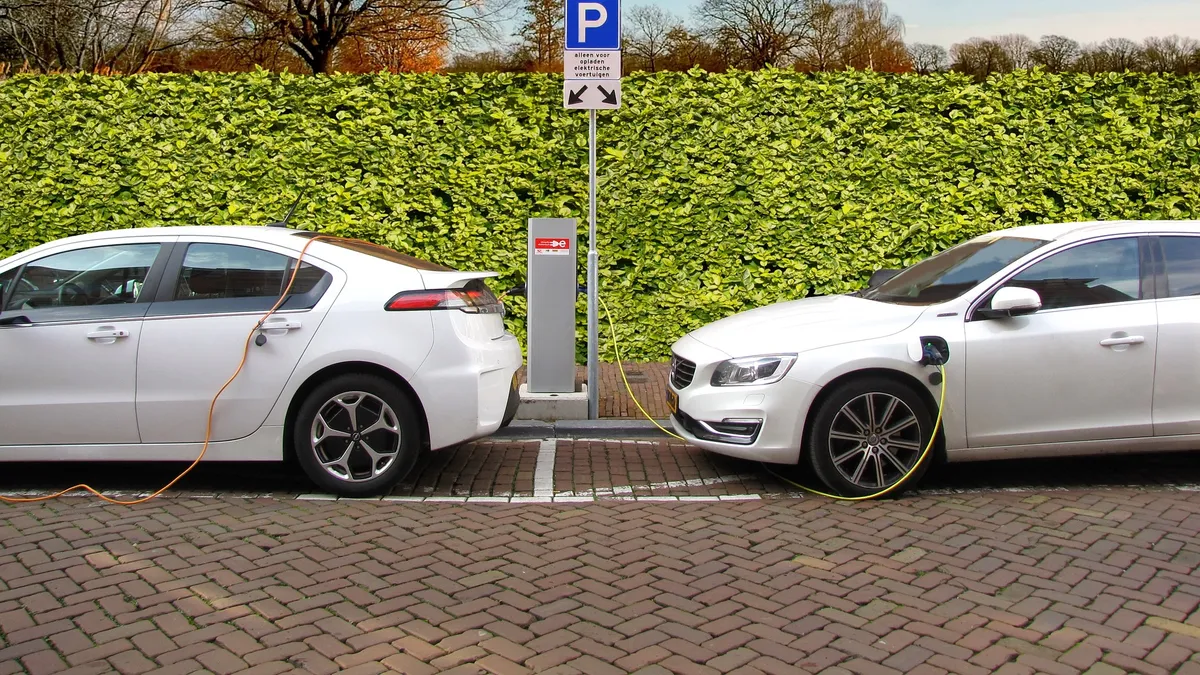Dive Brief:
- Southern California Edison on Tuesday filed a proposal to expand its Charge Read pilot, which has already installed 1,000 electric vehicle charging stations in the utility's territory. The $760 million expansion plan would aim for 48,000 charging stations over four years.
- By the end of this year, SCE expects to have rolled out 1,250 charging stations at more than 60 locations, through the Charge Ready pilot.
- According to the Natural Resources Defense Council, there are a total of nine electrification program proposals now before the California Public Utilities Commission with collective budgets around $1 billion.
Dive Insight:
As electric vehicle charging programs move out of pilot phases and begin aggressively building out infrastructure, expect to see some large numbers. SCE's proposal yesterday is a prime example, rocketing from a 1,250 test phase to a proposed 48,000 port rollout.
SCE said its Charge Ready program will bolster charging stations where people park their cars for extended periods of time: workplaces, campuses, recreational areas and multi-unit dwellings.
By 2030, California Gov. Jerry Brown has set a goal of having 5 million zero-emission vehicles on the road. But SCE says it expects more than that will be necessary to meet emissions reductions targets.
“Achieving California’s ambitious goals for reducing air pollution and harmful greenhouse gas emissions will require 7 million electric cars on California highways by 2030,” said Caroline Choi, SCE senior vice president for regulatory affairs.
The state wants to cut greenhouse gas emissions 80% by 2050, with an interim goal of 40% by 2030, both below 1990 levels.
SCE said the bulk of charging stations added during the program's pilot phase were installed at workplaces, schools and universities, hospitals, destination centers and fleet yards. In the second phase, SCE said it wants to "make a more concerted effort to increase the number of chargers available in apartment and condominium complexes as well."
The utility also wants to see a minimum of 30% of charging stations in communities that are "disproportionately affected by pollution and economic hardship." In the initial phase, more than half of all charging stations added were in those areas.















